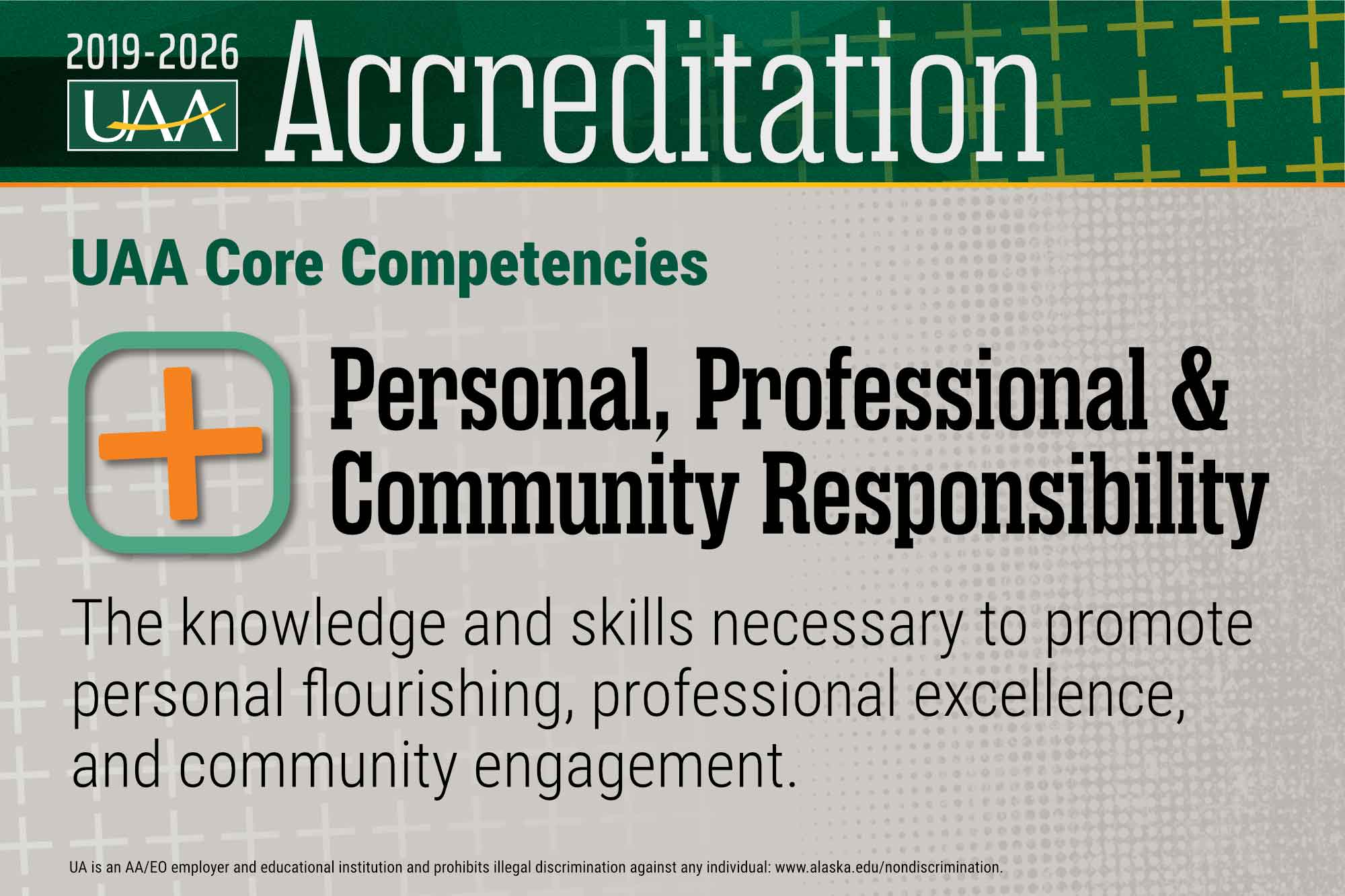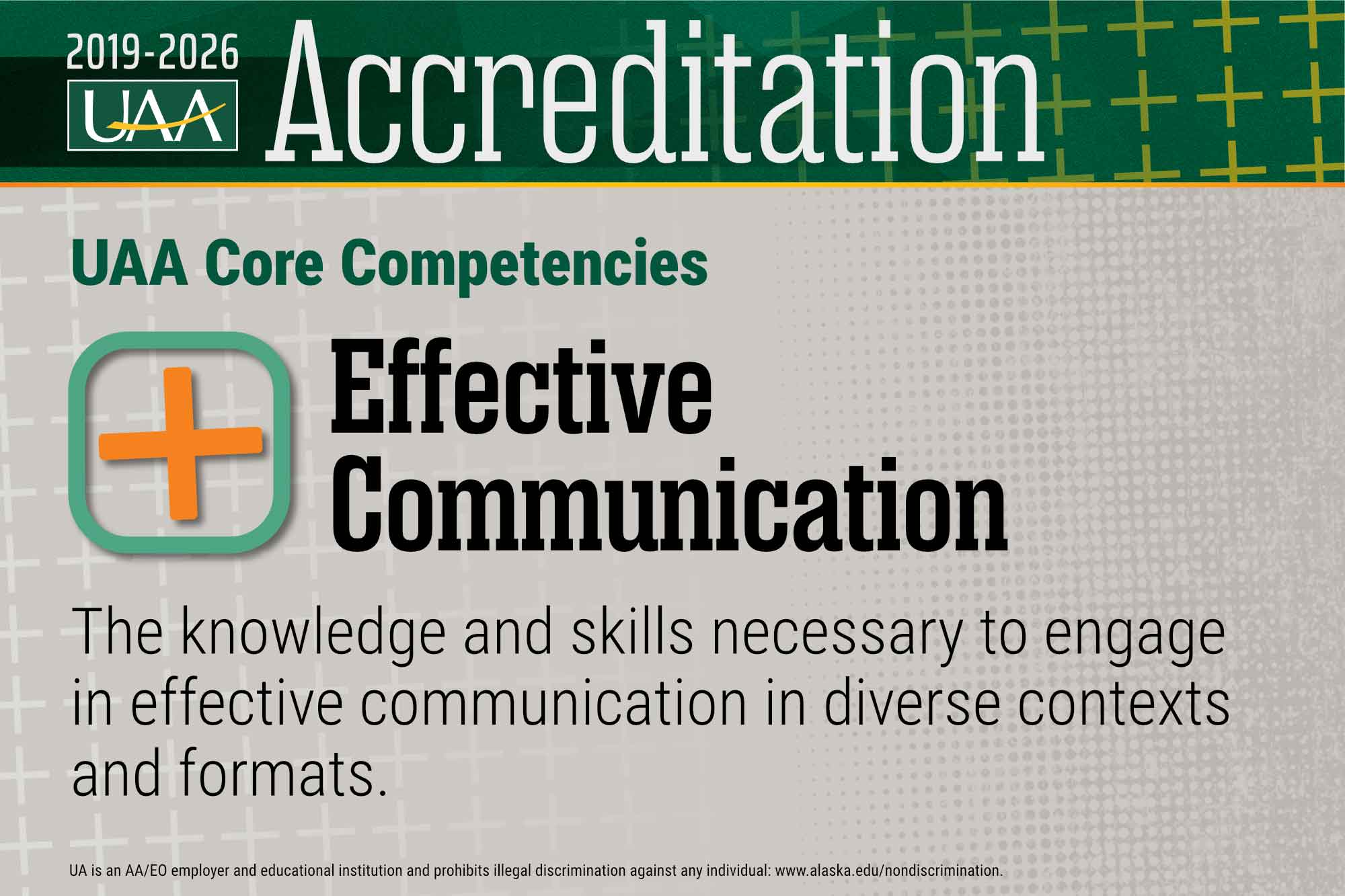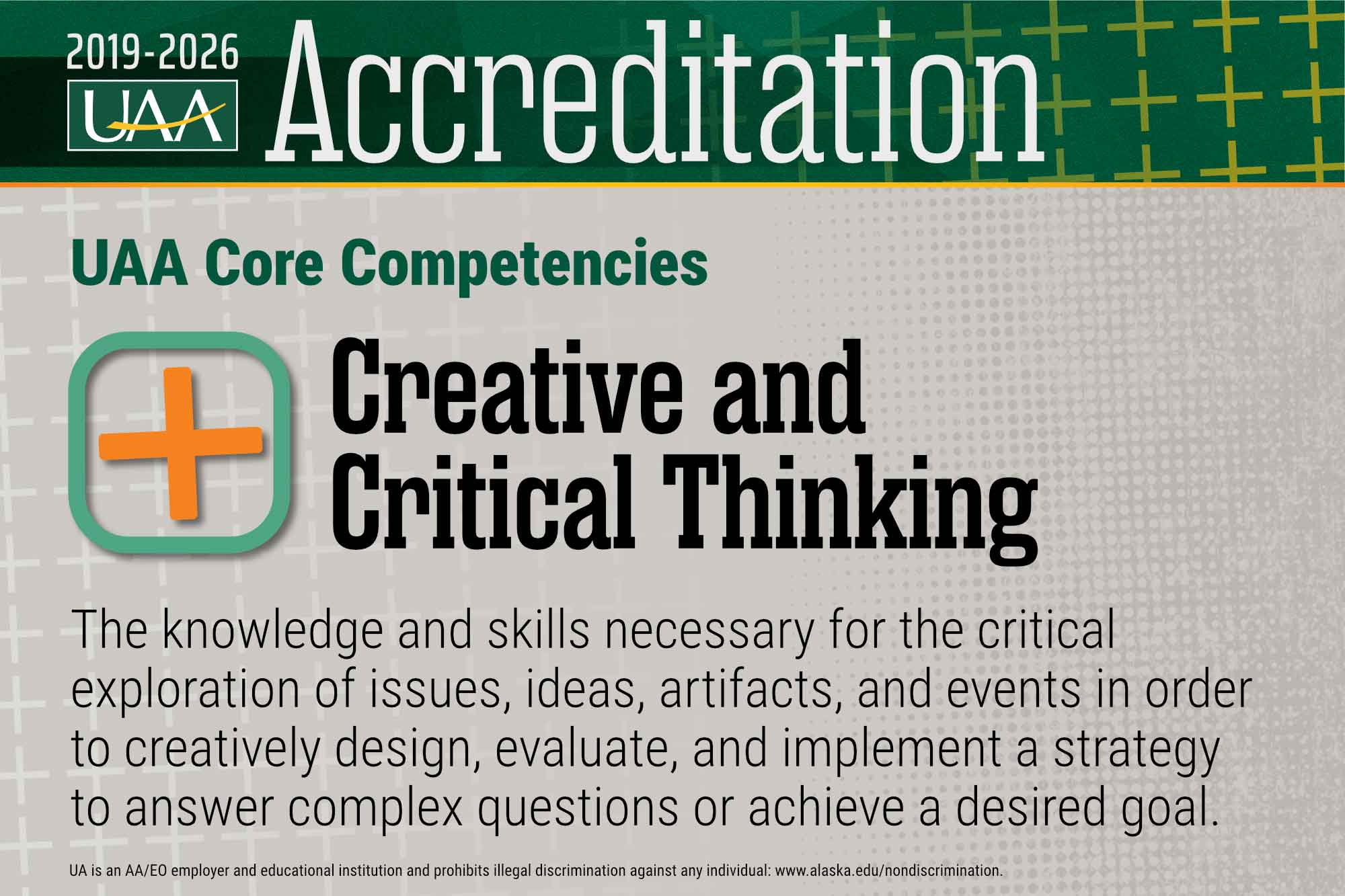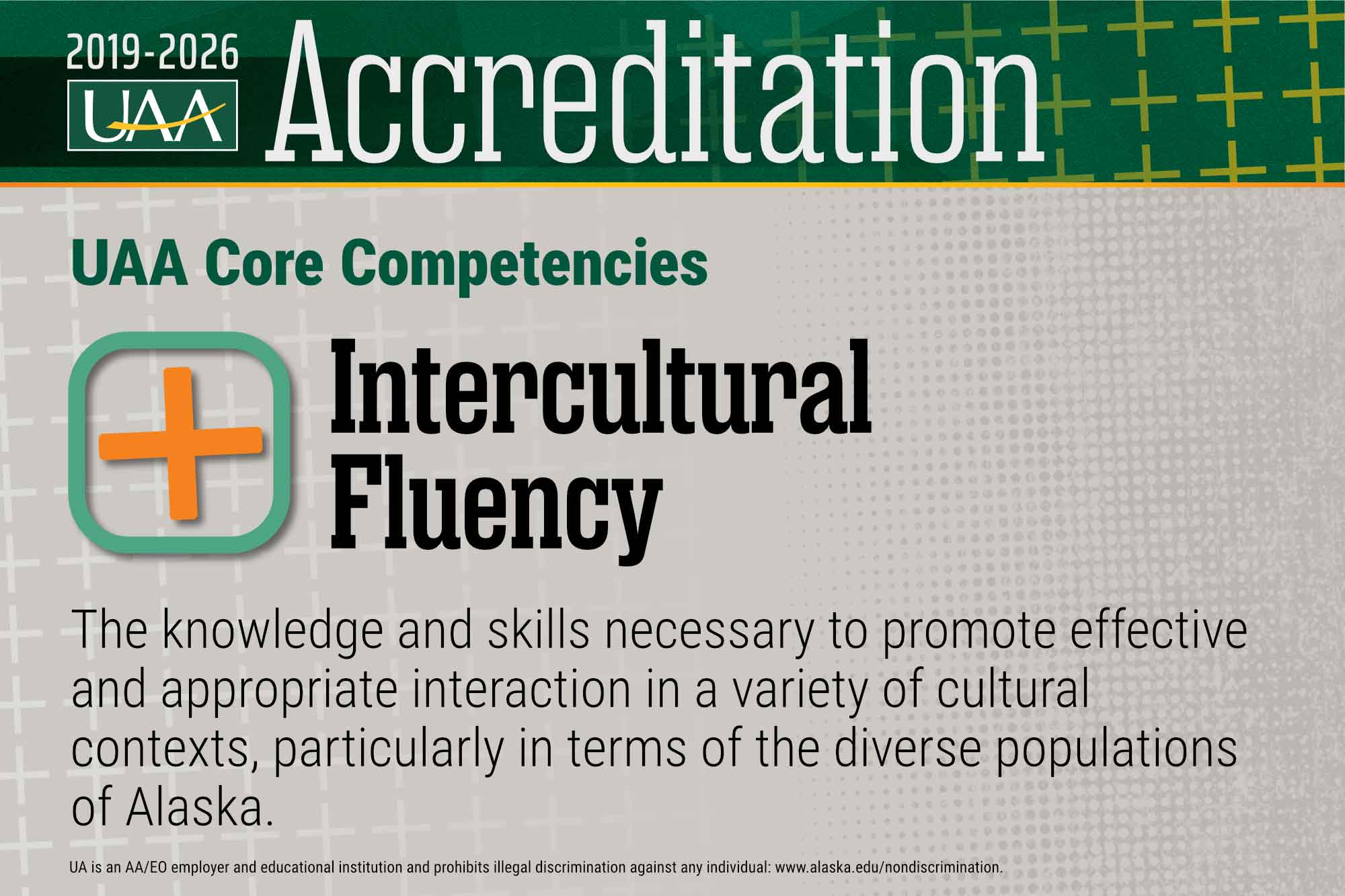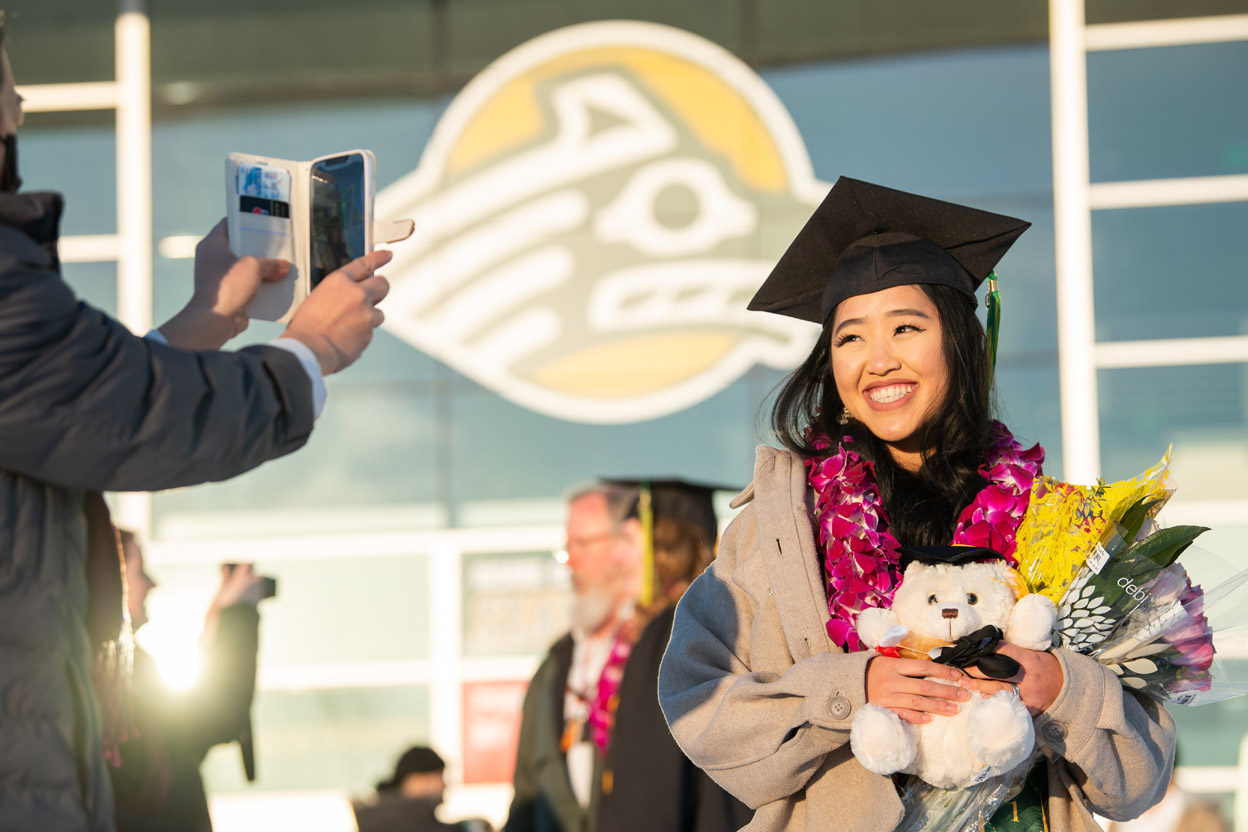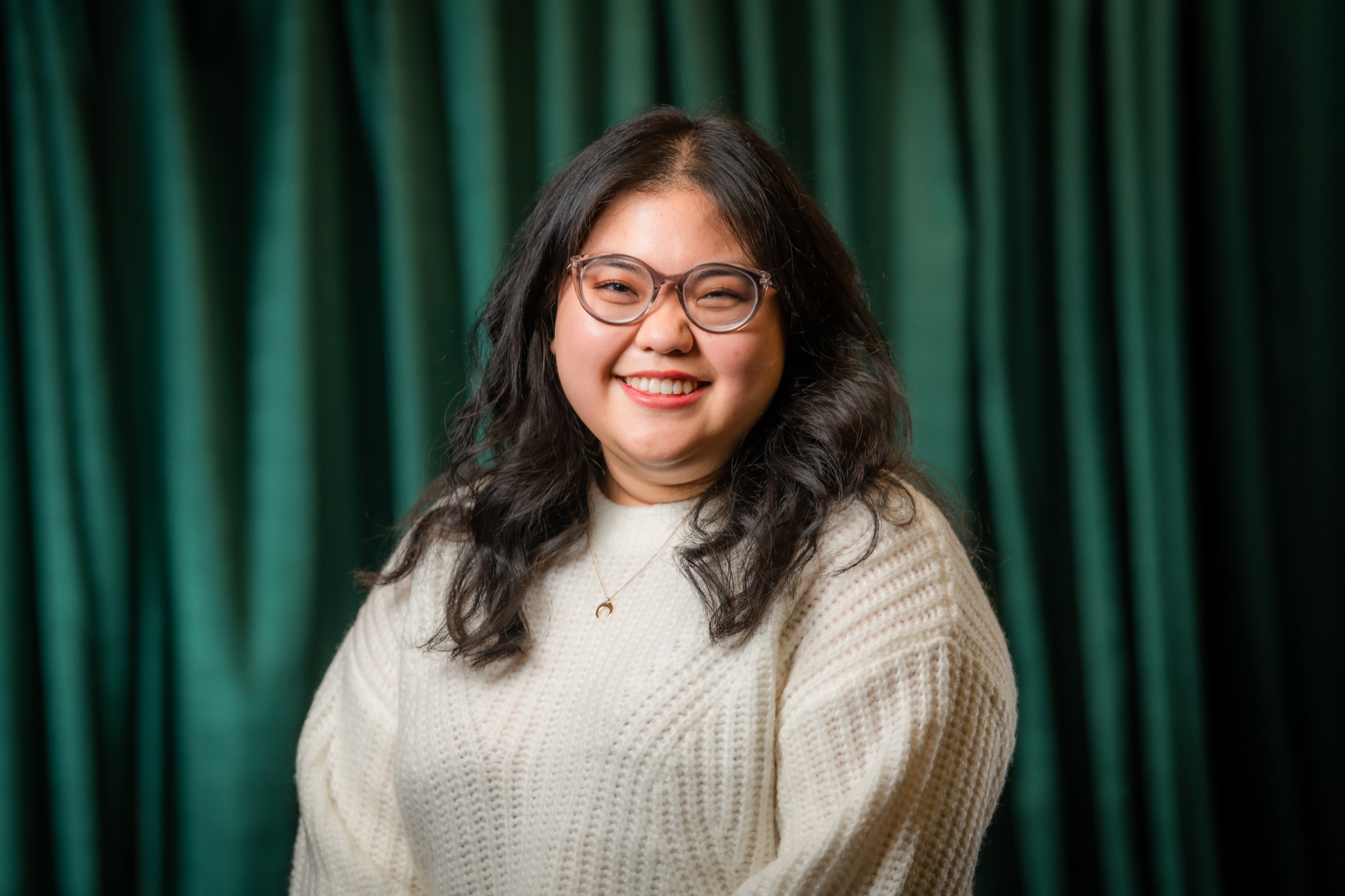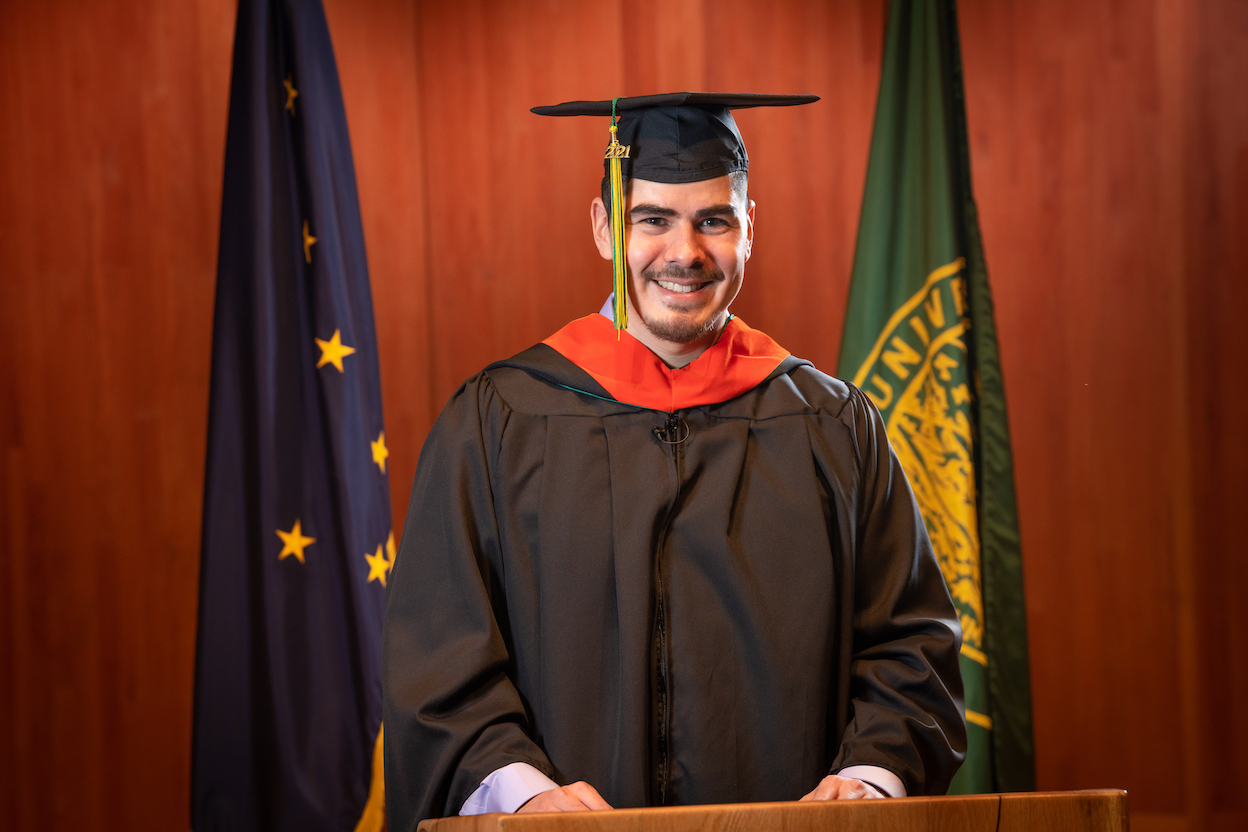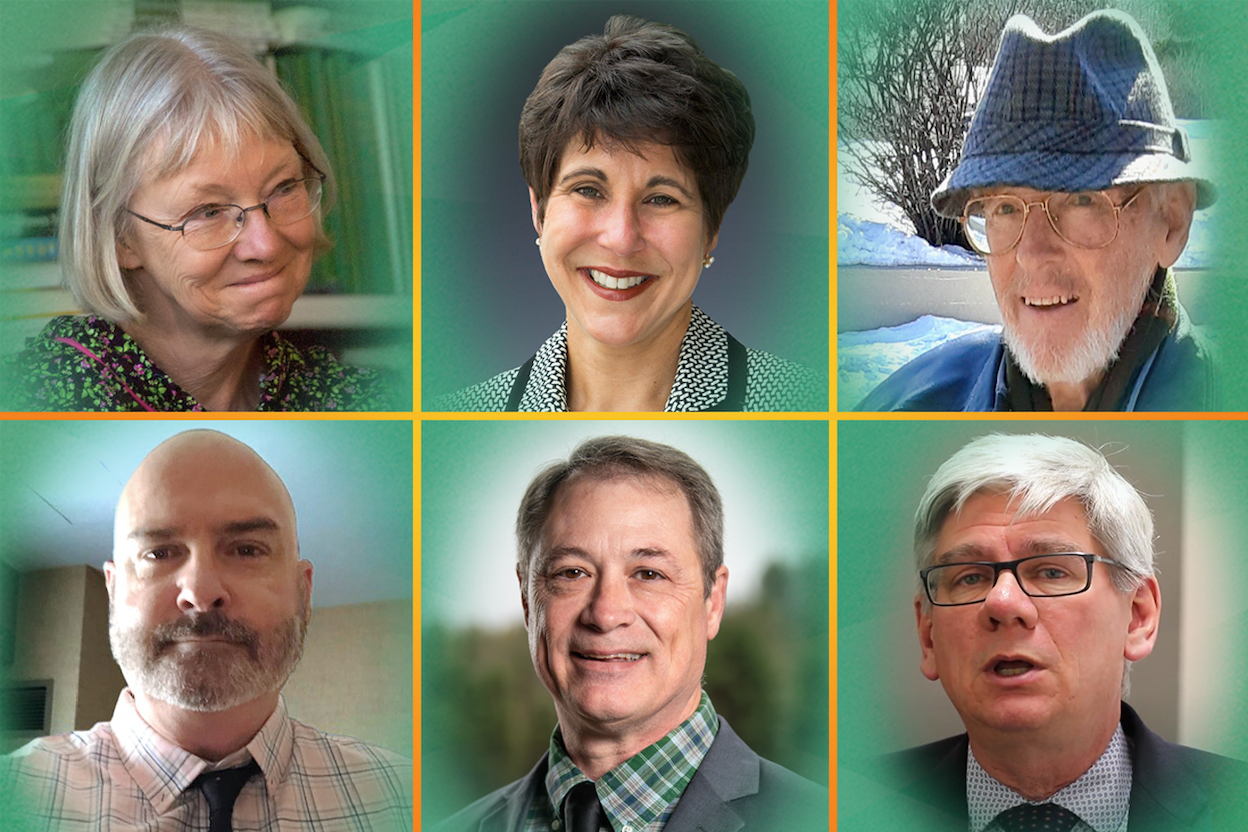The learning objectives at UAA's core
by Joe Selmont |
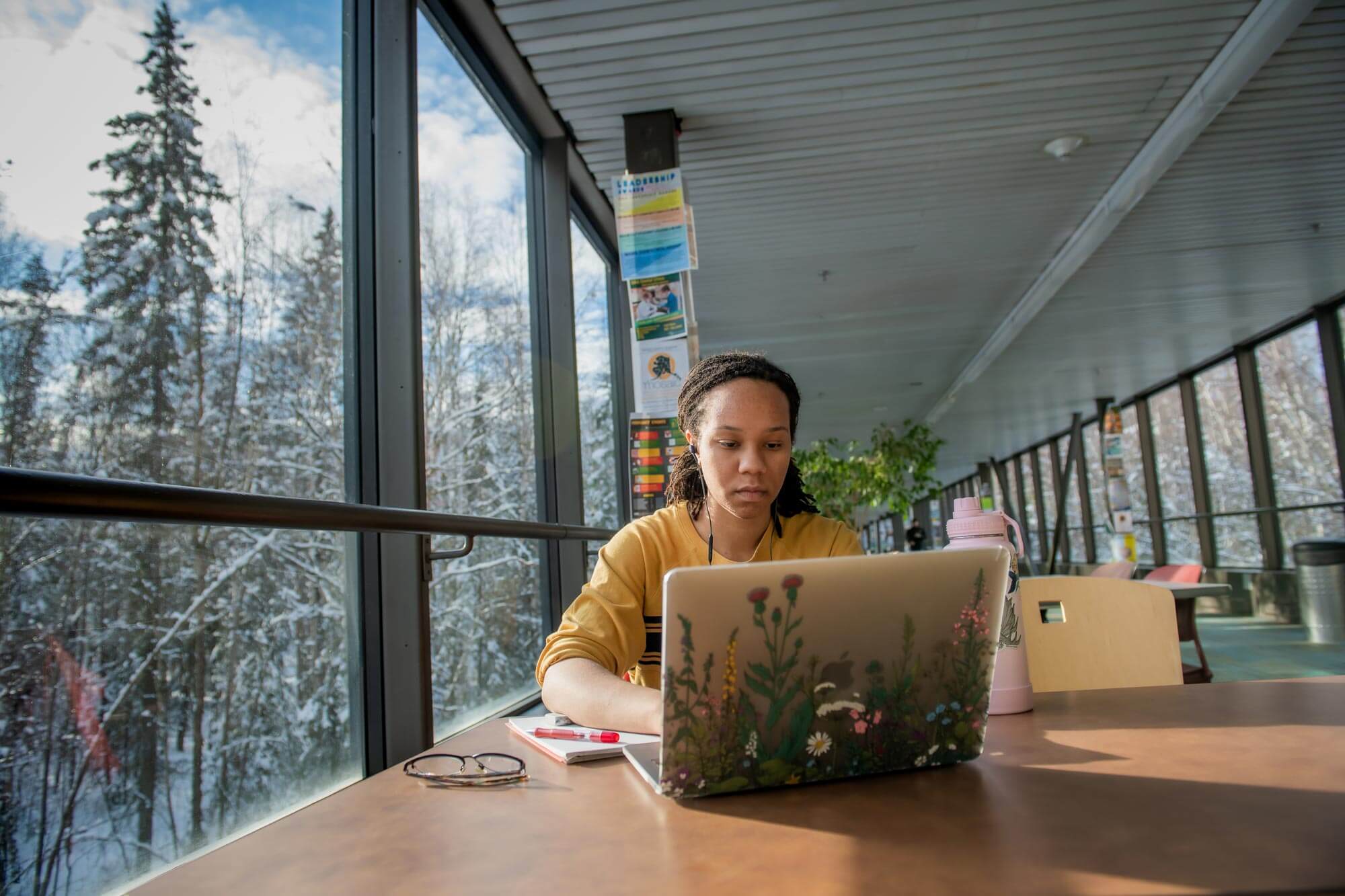
A key purpose of institutional accreditation is to answer a deceptively simple question: How do we know our students are learning what we believe they’re learning? This question is at the root of UAA’s culture of continuous growth and improvement — and, like so many complex questions, the answer requires input from our entire community.
This is why the accreditation faculty leaders — Carrie King and Terry Kelly, who are helping to support UAA’s accreditation efforts — have focused so much of their energy on developing an inclusive process for this accreditation cycle. The Northwest Commission on Colleges and Universities (NWCCU) has accredited UAA since 1974, and NWCCU last reaffirmed UAA’s accreditation in 2019. One of the central activities up to this point of the accreditation cycle has been the establishment of four institution-wide student learning core competencies.
Core competencies
“Once UAA decided to identify core competencies, which are basically the main skills that students should get out of a UAA education, then we knew the process needed to be deliberative and open,” said Kelly, who is also the chair of the Department of Philosophy. “Key stakeholders across the university needed to drive the conversation around these core competencies.”
According to Kelly and King, the accreditation process is in many ways tantamount to the outcomes. To ensure the UAA community fully embraces the core competencies, the process of defining them was highly self-reflective and provided multiple opportunities for input from students, alumni, staff, faculty and employers. Over the course of 2020, hundreds of UAA community members responded to surveys, spoke in focus groups and participated in workshops.
King, who is also a professor in the dietetics and nutrition program, said, “We really want to emphasize how collaborative this process has been. We started with over 30 potential core competencies, and then the stakeholders steered the conversation toward the final four.”
When all was said and done, the following core competencies were decided upon:
- Effective communication: The knowledge and skills necessary to engage in effective communication in diverse contexts and formats.
- Creative and critical thinking: The knowledge and skills necessary for the critical exploration of issues, ideas, artifacts and events in order to creatively design, evaluate and implement a strategy to answer complex questions or achieve a desired goal.
- Intercultural fluency: The knowledge and skills necessary to promote effective and appropriate interaction in a variety of cultural contexts, particularly in terms of the diverse populations of Alaska.
- Personal, professional and community responsibility: The knowledge and skills necessary to promote personal flourishing, professional excellence and community engagement.
And the process is not finished. On March 5, there is an open forum on the core competency of personal, professional and community responsibility. This will be an opportunity for UAA staff, faculty and students to share ideas for the best ways to offer intentionally designed opportunities, both in and out of the classroom, for students to develop this core competency. While personal, professional and community responsibility was the focus for this year, similar open forums will be held for the other core competencies moving forward.
Personal, professional and community responsibility
When asked what this core competency means in practice, King and Kelly were hesitant to define it narrowly. It is a broad core competency and that’s by design. They didn’t want to dictate how every department should understand personal, professional and community responsibility because it can have different meanings in different contexts, and because each discipline and profession emphasize different aspects.
Opportunities to develop leadership, teamwork and community service are widespread across UAA’s academic disciplines. For example, students in the College of Health regularly administer flu shots and other vaccines, including the COVID-19 vaccine. Students from many disciplines complete capstone projects that result in deliverables for community and industry partners. And students of every discipline are taught the knowledge and skills to not only help them find success in their careers, but also to motivate them to practice self-care and give back to their communities.
There are also opportunities outside of the classroom for students to develop this core competency. By joining student government or clubs, students can gain leadership experience and hone the array of soft skills associated with emotional intelligence. By working for The Northern Light or KRUA 88.1 FM, students in the journalism and public communications program can obtain firsthand knowledge of their industry. And by assisting faculty members with their research projects, students learn how to apply the scientific method in the real world.
“This may sound cheesy,” said Kelly, "but a lot of people think of responsibility as liability, whereas we try to think of responsibility as the ability to respond. We want our students to graduate from UAA and understand not only their moral and ethical orientation, but also how to have a strong sense of community, and how to achieve professional excellence.”
King added, “The spirit of the competency is to encourage our students to be well-rounded, well-intentioned and contributing members of society.”
 "The learning objectives at UAA's core" is licensed under a Creative Commons Attribution-NonCommercial 4.0 International License.
"The learning objectives at UAA's core" is licensed under a Creative Commons Attribution-NonCommercial 4.0 International License.










